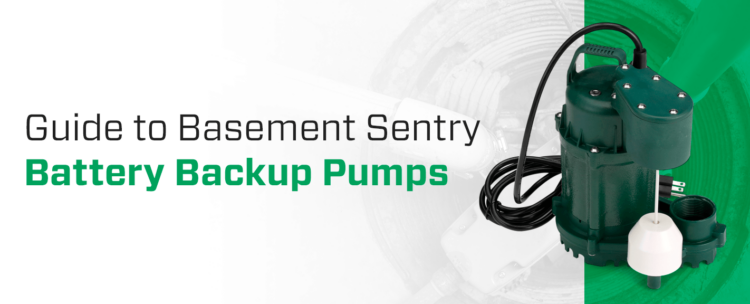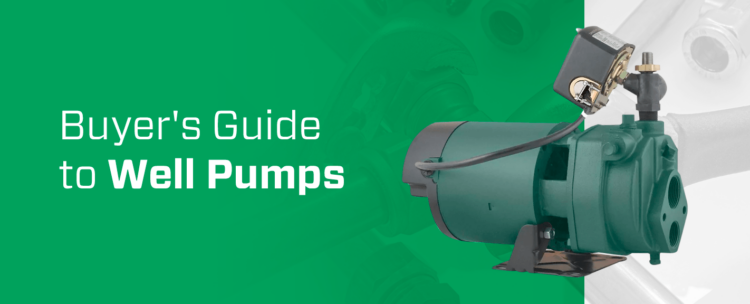
If you live in an area prone to storms, you probably know what can happen when the basement floods. That’s why sump pumps exist — to keep floodwaters from damaging your home. But what happens if your sump pump stops working when you need it most?
If your sump pump fails during a storm, the best thing you can do is keep your cool. Follow these steps to prevent water damage and prepare your home for future storms.
How Do You Know Your Sump Pump Failed?
Standing water in your basement or crawl space can be a sign that your sump pump has failed or is the wrong size for your space. Other telltale signs include:
- Abnormal noises
- Excessive vibrations
- Rust or corrosion
- Abnormally short or long cycles
- Doesn’t stop running
Your sump pump can stop working for many different reasons. Understanding the cause is vital for finding the cure.
What Causes Sump Pump Failure?
Here are some of the most common reasons your sump pump might be malfunctioning:
- Clogged weep hole: If debris is trapped in the weep hole, it can cause water to flow back into your sump pit. You can easily solve this problem by clearing the blockage with a small, pointed tool like a needle or toothpick. Note that this only applies to pumps without an air block prevention mechanism.
- Improper installation: Rushing through the sump pump installation process can create minor problems that eventually lead to breakdowns.
- Debris in the sump pit: Blockage in the sump basin is a common cause of failure. You may be able to remove most of it yourself, but it’s a smart idea to call in a professional for larger clogs.
- Broken check valve: Your check valve prevents water from flowing back into your sump pit. If you notice your pump cycling too frequently, a malfunctioning check valve could be the problem.
- Malfunctioning float switch: Check this component by filling the sump pit with water — it should automatically trigger a pump cycle. If nothing happens, something is wrong with your float switch.
- Damaged impeller: The impeller is the little star-shaped piece that helps move water through your pump. If you notice that your pump is vibrating too much, a clogged or broken impeller is likely the culprit.
- Leaky discharge pipe: If you notice water around the drain point of your pump, your discharge pipe may have sprung a leak.
- Old age: Even the most high-quality sump pump ages just like anything else, and it’s liable to reach the end of its life span after around a decade.
You can solve many of these issues yourself by replacing old or damaged parts and following a preventive maintenance routine.

What Should You Do if Your Sump Pump Stops Working?
First and foremost — don’t panic. Take a deep breath and wait to enter the space until you know it’s safe to do so. Make sure the power is shut off to avoid electrocution. Move slowly, being careful not to let any floodwater touch your bare skin.
Now that you’re at the pump, let’s check out what’s going on.
1. Inspect the Pump
You’ll want to inspect your pump first to diagnose the issue. Once you know what the problem is, you can determine how to fix it — which will be essential in preparing for future storms.
Carefully inspect each component until you find the source of the problem. If you’re having trouble determining what’s going on, it might help to call a plumber to check for you.
2. Remove Excess Water
Before you do anything else, you’ll also need to get rid of all the standing water in your basement as quickly as possible.
Take a squeegee and push the water toward the sump pit, then use your wet/dry vacuum to suck up as much as you can. If the power’s still out, you might need to use a hand pump instead.
For more serious flooding, it’s a good idea to rent a trash pump. These heavy-duty water pumps are designed to remove water containing solid debris like mud, sand, pebbles and twigs. You can usually find them at your local home improvement store or heavy equipment dealership.
3. Let the Area Dry
The next step is to dry out your basement. Follow these steps to speed up the drying process:
- Remove your wet stuff: Take all your wet items out of the basement — furniture included — and let them dry in a well-ventilated area, like your garage.
- Use a dehumidifier: Mold loves warm, humid spaces, so you’ll want to remove as much moisture from the air as physically possible. Standard units will usually be enough for small spaces, but large finished basements will likely need you to use a little more power.
- Turn on a fan: Locate whatever fans you’ve got and put them in the basement to get some air moving. More extensive flooding? Try renting an industrial fan from your local hardware or construction equipment store.
- Get rid of mold breeding grounds: Wet carpet and drywall are the perfect sources of nourishment for mold spores, so it’s best to just remove them entirely.
Wait to bring your furniture back in until the space has completely dried and the humidity levels are back to normal.
How Can You Prepare for the Next Storm?
So your sump pump failed on you — is it possible to make sure it doesn’t happen again? Here are some tips for preventing future sump pump malfunctions:
- Install a backup pump: Battery-powered backup pumps take over when your primary pump loses power, which can help keep water out of your basement during more serious storms.
- Replace worn-out parts: Often, old and worn internal components cause the whole pump to fail. Knowing when to replace those parts can help prevent serious malfunctions during emergencies.
- Set a maintenance routine: Preventive maintenance is one of the best ways to extend your pump’s life span. You’ll want to test that the float switch is working properly every three or four months, with more thorough maintenance at least once a year.
- Replace your sump pump: Nothing lasts forever — even high-quality sump pumps. If it’s been 10 or more years since you installed your existing pump, it’s probably time to put in a new one.

Protect Your Basement With Sump Pumps From Zoeller at Home
At Zoeller, we’re proud to provide homeowners with top-of-the-line pumps and accessories to keep your basement dry and your family safe. Our Basement Sentry line of intelligent backup sump pumps runs on battery power, so you’re covered during any emergency or natural disaster. Basement Sentry automatic emergency backup pump systems kick in the moment your primary pump fails — protecting your home when you need it most.
Browse our selection of Basement Sentry sump pumps and battery-powered backup pumps to learn more, and find a retailer near you.



